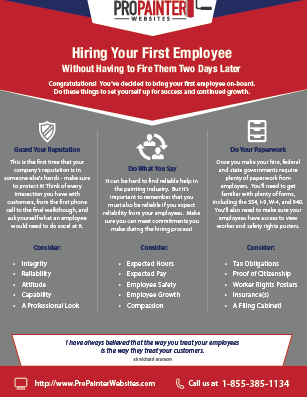Figure Out Exactly How Seasonal Aspects Influence Industrial Exterior Painting Success And Find The Best Times To Make Sure Lasting Results For Your Project
Figure Out Exactly How Seasonal Aspects Influence Industrial Exterior Painting Success And Find The Best Times To Make Sure Lasting Results For Your Project
Blog Article
Content Author-Regan Chaney
When you're preparing an industrial external painting project, seasonal factors can make or break your outcomes. You'll intend to think about just how temperature level and moisture influence paint application and drying times. Selecting the ideal period can guarantee your paint adheres appropriately and lasts much longer. However which periods are genuinely the most effective for this type of work? Allow's discover the crucial elements that can impact your project's success.
The Influence of Temperature on Paint Application
When you're planning a business exterior painting job, the temperature can substantially influence just how well the paint sticks and dries.
Preferably, you intend to paint when temperatures vary in between 50 ° F and 85 ° F. If it's also cold, the paint may not treat effectively, leading to problems like peeling off or breaking.
On the other hand, if it's also hot, the paint can dry out also rapidly, stopping proper attachment and leading to an uneven surface.
You should also take into consideration the moment of day; early morning or late afternoon offers cooler temperature levels, which can be much more favorable.
Constantly check the producer's referrals for the particular paint you're using, as they usually offer support on the excellent temperature level array for ideal outcomes.
Moisture and Its Impact on Drying Times
Temperature level isn't the only ecological variable that affects your business external paint task; moisture plays a significant role as well. High humidity levels can slow down drying times drastically, affecting the total quality of your paint work.
When the air is filled with moisture, the paint takes longer to cure, which can lead to problems like inadequate attachment and a greater threat of mold development. If you're painting on a particularly moist day, be planned for extended delay times in between coats.
It's vital to keep track of regional weather and strategy appropriately. Ideally, go for moisture levels in between 40% and 70% for ideal drying out.
Maintaining these consider mind ensures your task stays on track and delivers a long-term surface.
Best Seasons for Commercial Exterior Painting Projects
What's the very best time of year for your commercial external painting projects?
Springtime and early autumn are normally your best choices. During these periods, temperature levels are mild, and humidity levels are commonly lower, creating optimal conditions for paint application and drying.
Prevent summer's intense heat, which can cause paint to dry also rapidly, bring about bad adhesion and surface. In a similar way, wintertime's cold temperature levels can prevent appropriate drying out and curing, taking the chance of the long life of your paint work.
find more for days with temperature levels in between 50 ° F and 85 ° F for ideal outcomes. Bear in mind to inspect the neighborhood weather prediction for rainfall, as damp problems can ruin your job.
Preparation around these variables ensures your paint task runs efficiently and lasts longer.
Conclusion
To conclude, intending your business external paint tasks around seasonal factors to consider can make a significant difference in the end result. By organizing minneapolis home painting during the suitable temperature levels and humidity degrees, you'll make certain much better adhesion and drying times. Keep in mind to watch on regional weather prediction and choose the right time of year-- springtime and early loss are your best options. Taking these steps will certainly aid you achieve a resilient and specialist surface that lasts.
